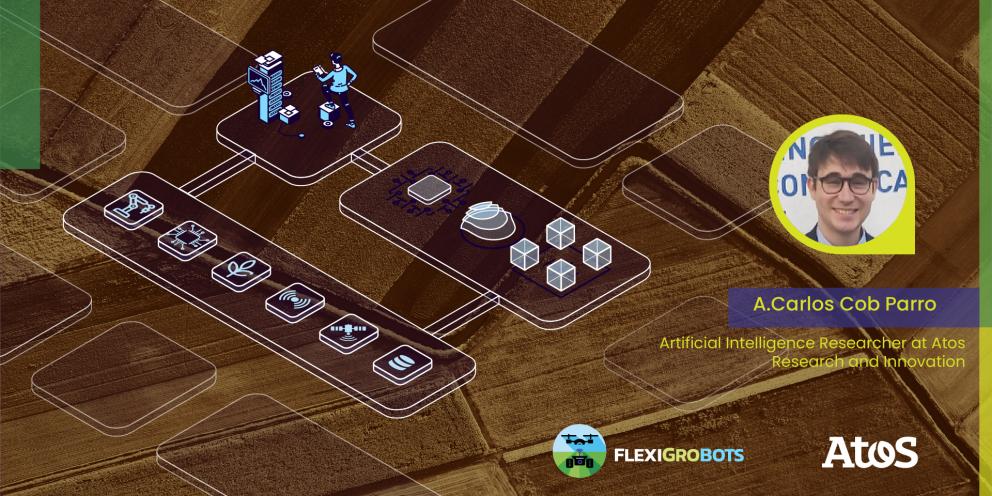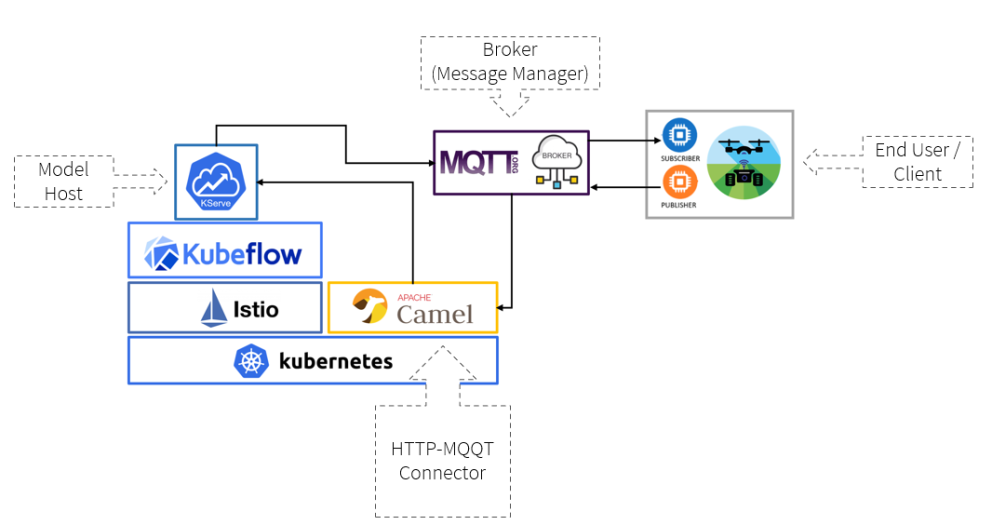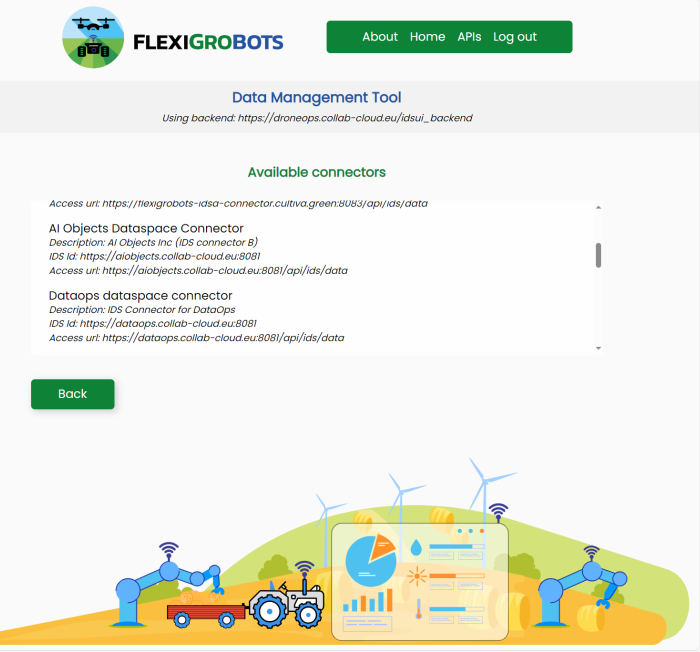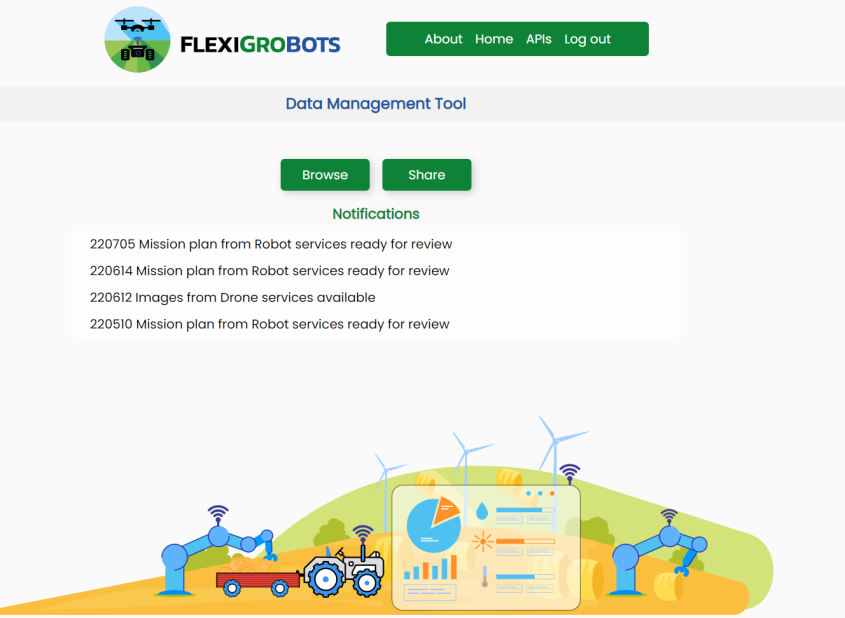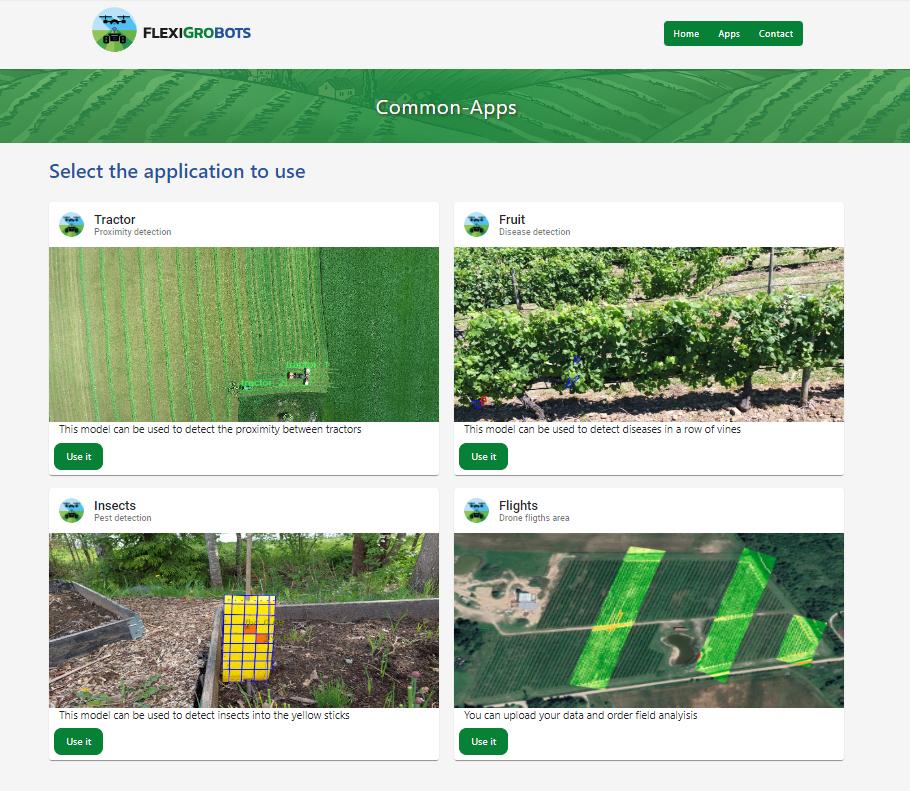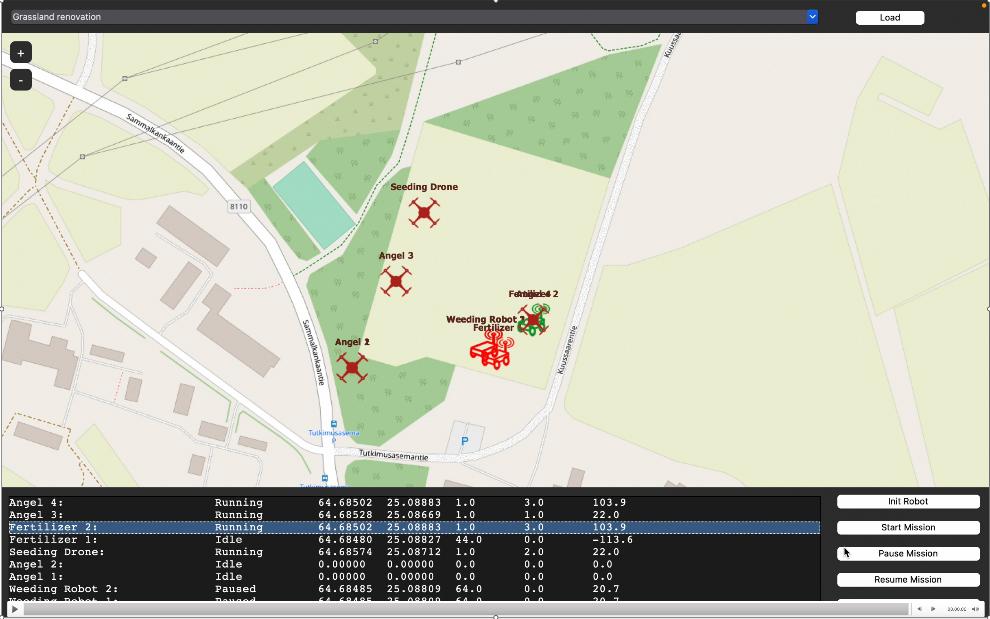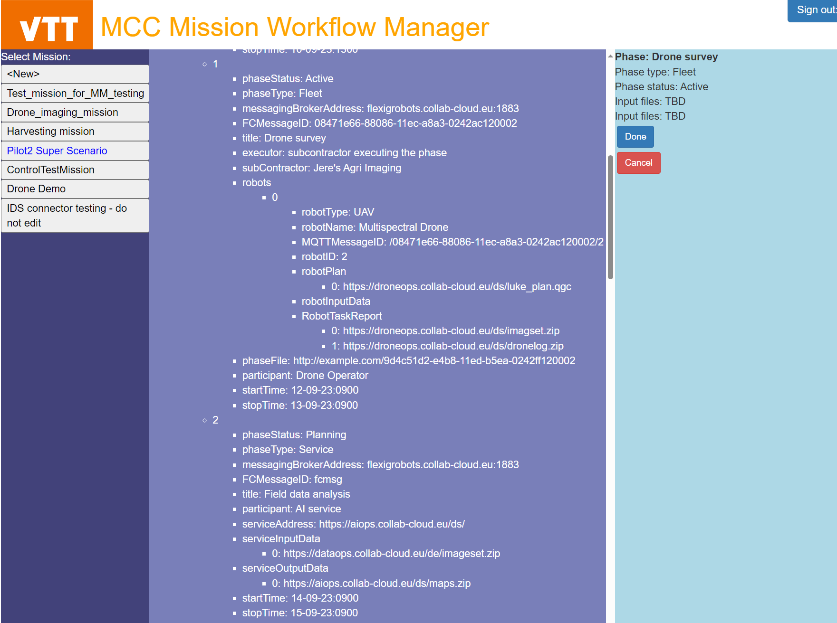FlexiGroBots AI Platform: Pioneering the Future of Smart Agriculture (WP3)
The agricultural industry is at the dawn of a transformative revolution, with the FlexiGroBots AI Platform at the vanguard, igniting this evolution. The latest enhancements to our platform have been critical, promoting a unified, technology-led method in agriculture. With meticulous upgrades and an eye toward future needs, here's an extensive update on our journey to redefining agricultural practices.
Recent posts
Unified Communication and Advanced Integration
In the heart of our agri-tech revolution, the AI platform stands as a beacon of innovation. Over the past months, we've supercharged our platform with cutting-edge advancements, ensuring it not only performs seamlessly with the latest updates but also works in perfect harmony with other systems developed by our talented teams across the consortium.
A pivotal enhancement to our platform has been the integration of the MQTT broker. This technology is the glue that binds various robotic systems within our ecosystem, enabling them to communicate effortlessly through the MQTT protocol. It's a game-changer that ensures all our automated helpers, the robots, can work together flawlessly, whether they're monitoring crops from the skies or tending to them on the ground.
But we didn't stop there. Recognizing the need for robust performance under any circumstances, we've bolstered our platform's muscle with powerful hardware upgrades. The addition of GPUs is like giving our platform a supercharged engine, allowing it to run multiple AI models simultaneously with incredible speed and efficiency. This means more power, more reliability, and more real-time insights for farmers, all at the touch of a button.
These enhancements are not just about showcasing technological prowess; they're about delivering tangible, practical benefits to the farmers who feed the world. By making our platform more powerful and more intuitive, we're helping to create a future where agriculture is more productive, more sustainable, and more resilient.
For those who crave the technical details, our platform architecture specifications offer a deep dive into the nuts and bolts of our latest updates. But the bottom line remains the same: we're here to make farming smarter, and we're just getting started.
Data Space: Secure, Connected, and User-Friendly
Our commitment to security and interoperability has led to the fortification of our Data Space to comply with IDSA standards. The introduction of new connectors and a REST API has simplified data exchange, accessible through a Jupyter notebook. We've also launched a user-friendly web interface, allowing for effortless data sharing and management within a secure environment. Our efforts in creating a connected Data Space are outlined in our updates on common application services and geospatial enablers and services. In the heart of our AI platform lies the Data Space, a secure spot where all the information farmers need can safely be stored and shared. We've been working hard to make sure it's not just safe, but also easy for everyone to use. By following the strict security rules from the International Data Spaces Association (IDSA), we're making sure that our partners can trust us with their data.
We've added new ways to connect to the Data Space, including a REST API, which is a simple type of internet address that lets our partners send and get data without any complications. It's designed to be used right from a Jupyter notebook, which is like a digital lab book that's great for keeping track of data and sharing it with others.
We also built a new web interface for our Data Space that makes it easy to move data around and keep it organized. This means that anyone, even those who aren't tech experts, can start using our tools quickly. With this new interface, you can find, use, and share data without having to worry about the technical details.
To see how this all comes together, check out our blogs on common application services and geospatial enablers and services. Here, we talk about how we use the Data Space to help our tools work better and give farmers the information they need to make smart decisions.
Our goal with the Data Space is clear: to make it as easy as possible for farmers to get the benefits of the latest data technology, without the inconvenience. We're excited about making these tools user-friendly, because when data is easier to manage, farming gets smarter.
Geospatial Innovation at Its Best
We're taking big steps in the world of geospatial technology to help farmers work smarter. By bringing together the Open Data Cube and MinIO storage service, we've built a system that avoids wasting space with duplicate data and gives quick access to satellite images from drones. This means farmers can get up-to-date pictures and information about their fields without delay.
With these tools, farmers can see exactly what's happening on their land. They can spot where crops are thriving and where they need more attention, which helps them make better decisions about watering, fertilizing, and dealing with pests. Our platform turns complex data into simple, useful information, allowing farmers to act before small problems become big ones.
We've also made sure that the valuable insights from geospatial data fit right into the FlexiGroBots system. This means that the detailed maps and analyses can be used easily by all the parts of our platform. We're proud of how our geospatial tools are developing, giving farmers cutting-edge mapping and forecasting that are easy to use.
Our aim is to give the farming world tools that are not just powerful, but also easy to use. We're working towards a future where precision farming is the norm, and understanding every bit of your farm is straightforward, helping every plant reach its potential.
Common Applications and Rigorous Validation
As part of our journey to redefine agricultural technology, our suite of Common Applications is reaching new heights of precision and usability. In the latest platform update, we've devoted considerable effort to enhancing these applications, ensuring they not only meet but exceed the demands of modern agriculture.
Our validation process is thorough and grounded in real-world data, especially gleaned from our recent summer campaign. This has enabled us to sharpen the accuracy of our models, including the aerial situational awareness model which now provides even clearer insights into field conditions from above. Additionally, the introduction of our innovative pest detector model is set to transform pest management strategies for farmers.
These applications are more than just isolated tools; they are integrated components of our AI platform, designed to work in concert with our newly reinforced hardware capabilities. The additional GPUs in our system mean that these applications can process data and deliver insights faster than ever, providing farmers with the information they need in near real-time.
This suite of applications stands as a cornerstone of our platform, providing farmers with the tools they need for efficient and sustainable agriculture. We invite you to explore these applications and see firsthand the potential they hold for the future of farming at our Common Applications portal.
Mission Control Center: The Command Hub
The Mission Control Center has received a significant upgrade with the Fleet Manager application, which has improved our management of robotic tasks. This development has been crucial in streamlining operations and enhancing the MCC's interaction capabilities with the Data Space. For more insights into how we're shaping the future of farming with task robot fleets, visit our blog on flexible coordination.
At the core of our smart farming operations is the Mission Control Center (MCC), which has recently undergone significant enhancements. Our MCC now serves as the nerve center for managing the complex tasks that our robotic assistants carry out in the fields.
Central to the MCC's advancements is the newly integrated Fleet Manager application, a tool designed to simplify the orchestration of our robot fleets. This application has been a star performer in our summer campaigns, demonstrating our MCC's strengthened capabilities in directing a diverse array of robots and seamlessly interacting with the Data Space.
The Fleet Manager is not just about efficiency; it's about providing a user-friendly command hub that allows for quick decision-making and effective management of agricultural operations. With its intuitive interface and robust backend, the MCC now stands as a testament to our commitment to practical, farmer-friendly technology.
Our Mission Control Center is the perfect example of how we're bringing the future of farming into the present. It reflects our dedication to empowering farmers with tools that are not only technologically advanced but also aligned with their daily needs and challenges.
For a more technical exploration of our MCC's features and the thought process behind its development, delve into our platform architecture specifications. It's here that we outline the full capabilities of our command hub and how it's set to revolutionize smart farming.

